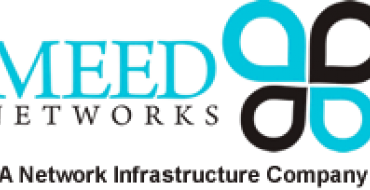
Have you ever searched for an item on Google and checked the fifth page of the search results?
Statistics shows that 80% of people do not go past the second page when searching online. Do you imagine how your product performs when it is also searched for?, are there ways you can improve and ensure that your site is on the first page! Search Engine Optimization (SEO) are techniques that let your site to be ranked highly in search engines such as Google. Thankfully Drupal that some features to help improve your rank.
The higher the rank of your site, the more organic traffic you are likely to have. The traffic can then be converted into an actual audience and not a bunch of anonymous IP addresses leaving a mark on your traffic logs. The following features in Drupal helps improve your site’s rank.
Step1: URLS
Start by enabling clean URLs within your system settings. Drupal by default gives all of its URLs an ID instead of a readable URL, like “acquia.com/node/25”. Enabling clean URLs takes the page title and turns that into a readable URLs. If you’re not using Drupal making sure you have a readable URL is very important for search and helps users remember and return to your page.
Step 2: Module Magic
Now, time to go get some modules from the repository at Drupal.org (the online home for Drupal’s community of module contributors and theme designers) to fill out the SEO toolbox. I’ve listed out the top four modules I suggest putting on your website to help with SEO. These are the ones I use and highly recommend
-
This modules allows you to put in 301 redirects from old URLs to new ones. Drupal by default does not remove the old or original path if you create an alias, which can cause duplicate content in search engines and negatively effect your SEO efforts. This module is available for Drupal 7 and has an alpha for Drupal 8.
-
This module allows you to add a custom browser title, description, keywords, and a handful of advanced search options on a per page basis. Having custom browser titles and page titles allows you to tell search engines more details about the content on your page. This module is available for Drupal 7 and has a beta version for Drupal 8.
-
This module automatically generates your page URLs based on content you define. For example, you can pick a content type such as blog post and always have the URL be /blog/[blog title]. This way the user doesn’t have to manually specify a path alias. And if you give your content keyword-rich titles, your URLs will also contain those high ranking terms to improve your content’s rank with search engines which reward keyword appearances in page addresses. This module is available for Drupal 7 and has an alpha for Drupal 8.
-
This module creates an XML sitemap for search engines to easily find and index pages on your site. It also allows for you to submit your sitemap to the top search engines. This module is available for Drupal 7 but doesn’t have a release yet for Drupal 8.
There are of course many more modules you can add, and once you’ve set these up and configured them you may have a need for even more. These are the ones we use and highly recommend.
Step 3: Define your keywords
Now that you have all the base modules for SEO, my suggestion would be to define your targeted keyword list. The Google keyword planner shows the number of searches for a specific term. This can tell you if there is any traffic potential from that keyword if you are able to rank for it. Other useful tools include:
-
Google Trends – Allows you to see how a keyword has done over the years.
-
WordTracker – Provides dozens of tools to help you find the best keywords.
-
Moz – This software has tools for reporting, site audits, keyword research, and link building, and is best for a DIY team.
Once you use any of these keyword tools, you should have a list of keywords that will be the focus of your SEO campaign.
Step 4: Pull it all together
In Step 3 you defined your large list of keywords, now in order to start optimizing for each keyword start by aligning a single page to each keyword in your list. This will give you a better chance to rank higher for those key terms. Each page should be the “bullseye” for one or two targeted keywords. This will show you any content gaps you may have with your keyword list and your current site content. If you have a keyword that doesn’t map to a page you will need to create one or maybe that keyword isn’t quite right for your business. Once your keyword mapping process is done, write page descriptions for each of those targeted pages containing those same keywords, create or update page titles in your metatag module field, and be sure to update page content to include those targeted keywords as well.
Congratulations! You now have a well optimized Drupal website!
- Log in to post comments





